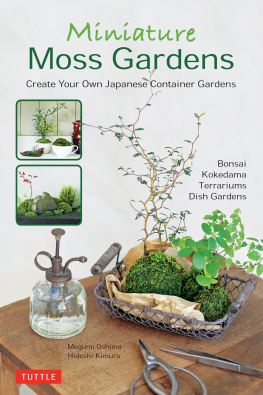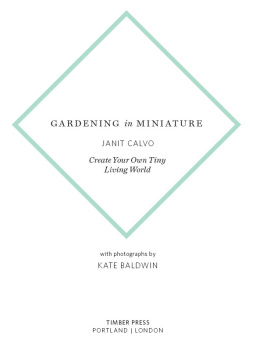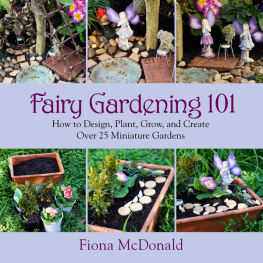
Rock Gardening
Reimagining a Classic Style
JOSEPH TYCHONIEVICH
Timber Press
Portland, Oregon

Contents

No other kind of garden offers as many opportunities for experimentation and enjoyment as a rock garden.
Introduction
A warm welcome to the fascinating miniature world of gardening among rocks.
Rock gardening, the art of growing alpines and other miniature plantsoften in the company of rocks to recreate the look of a rugged mountaintophas been surging in popularity. There are many reasons that this classic design is coming back into style. Gardeners today generally have less time and less space to garden than their parents or grandparents did, while rock gardening allows an urban gardener with an apartment balcony or tiny plot to grow a bewildering diversity of different plants in a small space, and maintenance takes a fraction of the time required to deal with a similar number of plants in a large perennial border. In addition, many rock garden plants are notably tolerant ofor even fond ofdry conditions, making them the perfect answer to the chronic droughts that seem to be becoming the new normal in much of the American West and elsewhere.

Aquilegia canadensis on a cliff-face in western North Carolina.
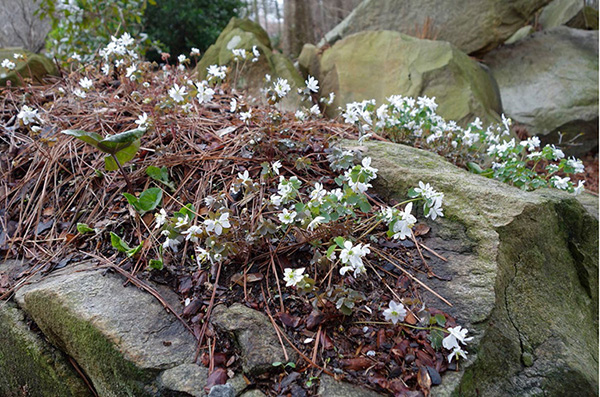
Anemonella thalictroides blooming on a stone in Atlanta, Georgia.

Asperula suberosa showing the classic beauty of an alpine plant.
Aesthetics is driving people to rock gardens as well. As with anything else, from fashion to food, we get tired of the familiar and want fresh, exciting approaches. The spare, architectural forms and dramatic flowering of alpines are in stark contrast to and a welcome change from the lush containers of annuals and thickly planted perennial beds that have dominated gardening trends for so long. Add to that the fad for fairy gardening, which makes use of tiny plants but with a heavy dose of bright, exuberant, over-the-top fantasy notably lacking from traditionalist rock gardens (traditionalists being fond of their rules and their proper ways of doing things), and, well, youve got a perfect storm: a new wave of rock gardeners and gardens that are beautiful, exciting, and fresh.
This new trend in rock gardening is part of a long aesthetic tradition that starts with scenes that anyone who hikes around mountains or cliffs or stony ground will know well: a ridge, cliff-face, or big boulder with plants tucked down in a crevice between two stones, in the soil behind a rock, or even in a shallow pocket of leaf mold collecting in a stony depression. The visual effect of a delicate, beautiful flower set against the hard austerity of stone provides a dramatic contrast, and there is something magical about a seemingly fragile columbine or lewisia managing not just to live but also to thrive in what appears to be a hostile, lifeless location.
Rock gardening starts with that image of beauty amid rocks, and draws the bulk of its inspiration from the harsh conditions at the tops of mountains where there is an abundance of stony crevices and striking plants specialized to live among them. Plants in these high alpine regions tend to evolve in a very distinctive, beautiful way. Exposed to harsh winds, limited water, and fierce sun, they tend to stay extremely small and compact, forming tight mounds that can withstand the brutality of the climate. At the same time, these harsh conditions mean that pollinating insects like bees can be few and far between; so when it is time to reproduce, plants go all out, producing huge numbers of often wildly disproportionately large flowers to make sure they draw in every potential pollinator in the area. The result is what I think of as the classic alpine planta tiny, dense mound of leaves that can completely cover itself in a solid sheet of brilliant flowers.

A traditional rock garden at Royal Botanic Garden Edinburgh, Scotland.
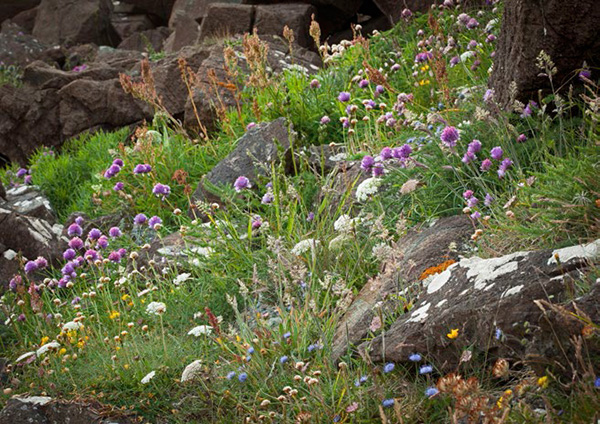
Allium schoenoprasum, Jasione montana, and Daucus carota growing on cliffs on the Lizard Peninsula, Cornwall.

From plant choices to design, this southwestern garden looks little like a traditional rock garden, yet it is based on the same gardening principles.
Enjoying the simple beauty of plants against rocks, and cultivating the distinctive forms of alpine plants, is the heart of traditional rock gardening, ranging from gardeners who obsessively recreate the look of mountaintops, to those who carefully cultivate individual specimens of plants into breathtaking peaks of bloom not to be matched by anything else in the plant world.
But from that old-school rocks-and-alpines version, rock gardening has been evolving. Traditional rock gardening has moved out to different parts of the world, taking on different forms as gardeners explore and adapt to their local conditions and tastes. Many plants native to dry, desert areas are just as happy in well-drained gardens as alpines are, and look just as lovely against a rock. So particularly in the American West, you are as likely to see cacti and agaves in a rock garden as the more traditional alpine dianthus and saxifrages. And traditional rock garden plants dont have to be grown with rocks: a subtle layer of sand and gravel added in parts of the perennial border can make for perfect conditions to grow alpines in what may not look much like a traditional rock garden at all.
Gardeners with a lot of shade have been taking rock gardening in yet another direction, finding that plants like miniature hostas, heucheras, and asarums are both very happy and look great growing between stones in a shady rockery, even though they are not true alpine plants.
This book aims to be an introduction into that wide world of the rock garden in all its diverse modern incarnations. To that end, well start with a series of garden tours, visits to gardens across the United States and the United Kingdom to show you the full range of diversity within rock gardening, and give you ideas and inspiration for rock gardens you might want to create. With that inspiration in mind, the second section moves to the practical how-to, delving into the techniques and methods specific to creating and maintaining a rock gardenranging from dealing with the vagaries of your local climate to choosing the right soil. The final section is a tour through some of the classic rock garden plants, especially those suitable for beginners, so you can start assembling a palette of terrific plants for your first rock garden or renew your love affair with the rock garden you already have.
Next page




